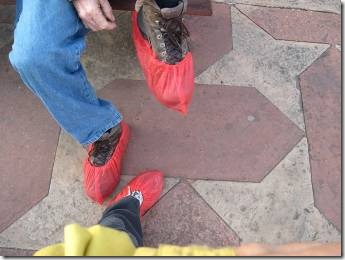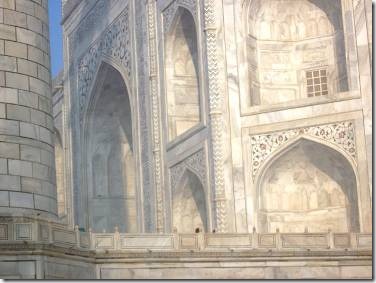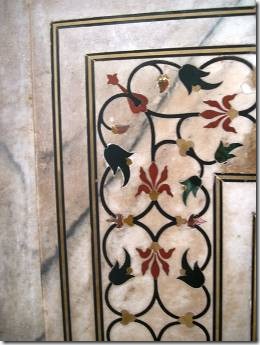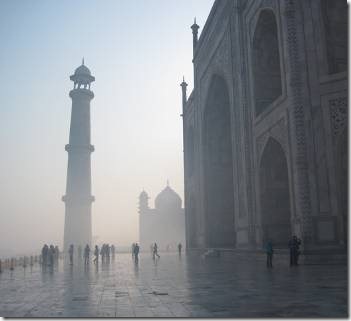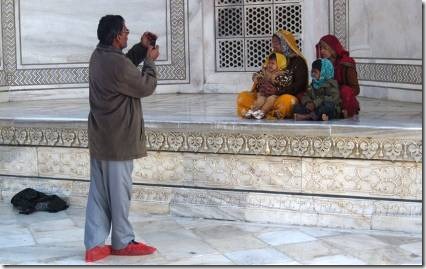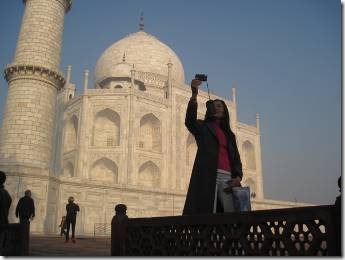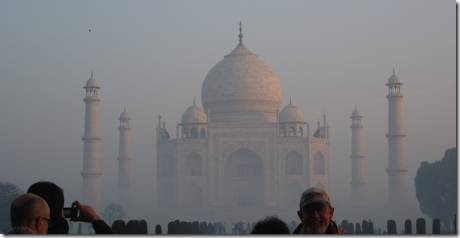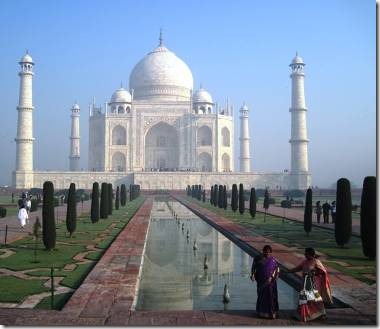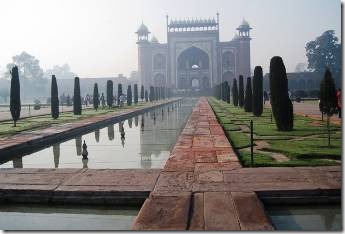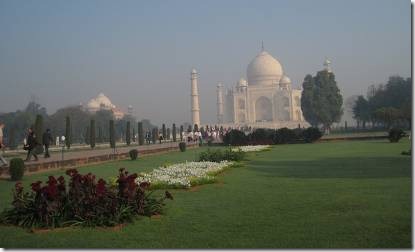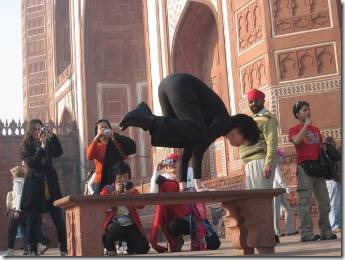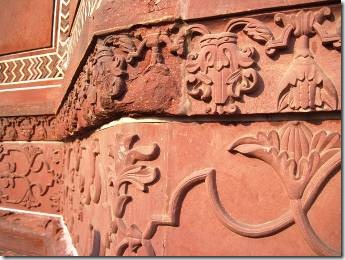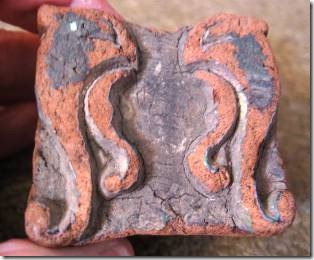Putting on our shoe coverings to visit the Taj Mahal
This certainly beats taking off and putting back on sneakers and also walking around barefoot on floors that, even if they were clean, were quite cold.
In the very center of the mausoleum are the cenotaphs of Mumtaz Mahal and Shah Jahan but photos weren’t allowed. They are white marble with rows and rows of inlaid flowers. But both are really buried in a dark crypt below.
The white marble had colored stones inlaid.
The red and yellow colored stones were translucent and when a flashlight was shone on it, let the light through.
It really is quite immense.
A family outing.
Thankfully locals paid much less for their tickets than foreigners at all of the monuments we visited. One palace in Jaipur charged $55 US per ticket so we took a pass. The ticket charge for the Taj was 750 rupees per ticket for foreigners. That translates to about $16 US per ticket. Everyplace we visited charged and at times, we also had a local guide arranged by our “tour operator.” The local guide did add a great deal but that added “a tip” to the ticket price. We could have chosen not to have a guide but we did learn more though I can’t say that I remember all that much.
A do it yourself photo.
I offered to take a photo for her but she said that she could do it. My arms aren’t long enough and I always end up with a bad photo of myself. Of course other people don’t always get it right either….
Not sure who took this one but……
I like the two women in their saris.
Looking back at the entrance gate.
Another view showing some of the grounds.
The photo from the other direction must have been an interesting image of the Taj.
Close up of the red sandstone.
Pattern block for bas relief.
I bought this small block in Jaipur before we visited the Taj. The young shop keeper told me that an artisan would carve this small example to be used as a pattern for workers making columns. I don’t know if that’s true or it was used for block printing but someone had to make patterns that the workers would use and maybe they carved them.
Ru
DoraMac

